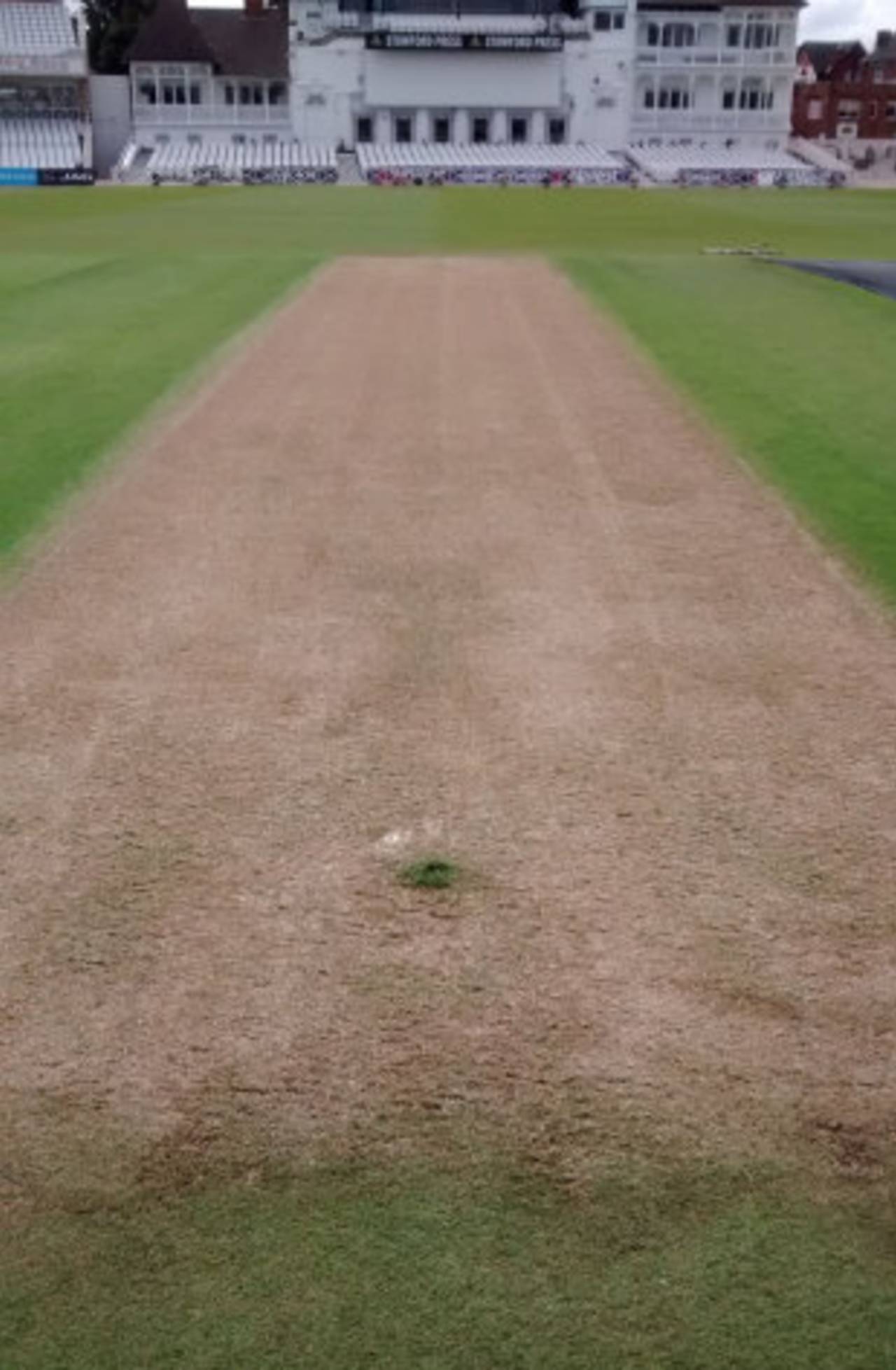'Don't want teams bowled out for 180' - Trent Bridge curator
Steve Birks, the man in charge of the Trent Bridge pitch, has said that the challenge for the teams will lie in the quality of the bowling and overhead conditions
Sidharth Monga
05-Jul-2014

The Trent Bridge pitch is currently covered with a few millimetres of straw-coloured grass • ESPNcricinfo Ltd/Sidharth Monga
Trent Bridge, the venue for the first Test, is rightly being considered India's biggest test, but the challenge lies in the quality of the bowling and overhead conditions, according to Steve Birks, the man in charge of the pitch. With four days to go, the pitch does not look green or menacing from a distance. However, if you look at it up close, it is covered with eight to nine millimetres of straw-coloured grass, which is not live but can provide seamers assistance.
"The grass is dry, and we have been pushing it in every day," Birks said. "We have been watering around the edges. We don't want teams bowled out for 180."
Stuart Broad's grumblings about the pitches provided for the Sri Lanka series have had no impact on the preparation of this surface, Birks said. "You can't try to keep too many people happy," Birks said. "Bowlers want one thing. Batsmen want one thing. If you can just do your best, it is up to them to perform."
One of Broad's concerns - the poor carry at Lord's and Headingley - is not expected to resurface. "We are trying to get a bit of carry," Birks said, knocking the surface to demonstrate how hard it is underneath the brown grass. "If we get carry we are happy. There should be good carry. Four days to go, it is hard. Really hard."
Coming to their backyard, James Anderson and Broad should not need to worry too much: they take wickets in their sleep at Trent Bridge. Anderson has struck 49 times for 17 runs apiece, and Broad has 21 wickets at 23.
The length of the grass on the pitch is crucial. In 2011, Birks was quoted in The Cricketer magazine as saying: "When we won the Championship, we were cutting the wickets at 7mm and last year we flattened them out a bit more at 5mm. I don't want to pre-empt what Mick Newell [the Nottinghamshire coach] has to say but I've a feeling we might be changing that next season."
How much shorter are we going to go from the current length? "We have got 8mm at the moment," Birks said. "Monday-Tuesday, we will trim it to down to maybe 6, and then have a look at that [and see] if we need to go lower. Looking dry. Nice straw-coloured look to it."
That sounds somewhere between angel and monster.
Birks might say he does not want teams getting bowled out for 180, but that has been the general trend at Trent Bridge. When India came here in 2011, both first innings ended pretty early before the pitch settled down. The same happened in the thrilling Ashes Test last year, when England's first innings lasted 59 overs, and Australia's 65. And yet we had a match that was alive on the final afternoon. In the last first-class match at Trent Bridge, Somerset were bowled out for 168 on the first day, but the next two innings were 461 and 402.
All signs point to putting teams in, but Birks thinks it looks like a bat-first pitch. "Looking at the surface, it has looked like a decent bat-first wicket," he said, "but then we have bowled first some days and we have got teams out easy. It all depends on the bowlers and the overhead conditions."
The week before the Test has been dry, allowing smooth preparation, but the next few days have rain forecast. It rained all of Friday night too, which could help the pitch retain some moisture and even provide a tinge of green.
The flattening out of the surface in later stages of matches has been consistent with the changing nature of all the pitches in England. The new drainage system has made sure the moisture disappears much faster than before. Trent Bridge, though, has retained help for seamers. "We did struggle with it for the first two years but then most of us got used to it," Birks said. "We try to leave a fraction more moisture in it. We water the ends a lot more, leading up to the game."
Sidharth Monga is an assistant editor at ESPNcricinfo